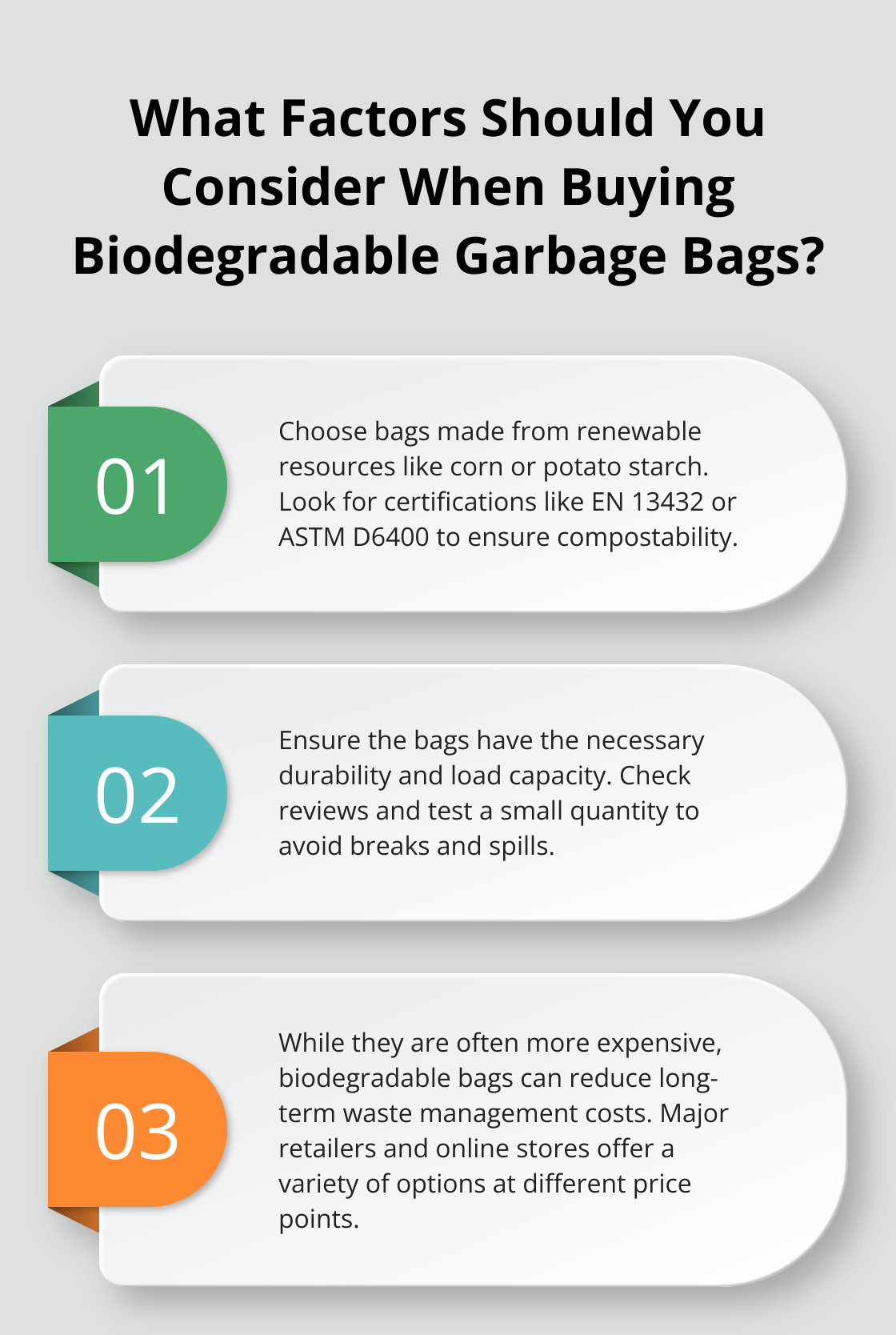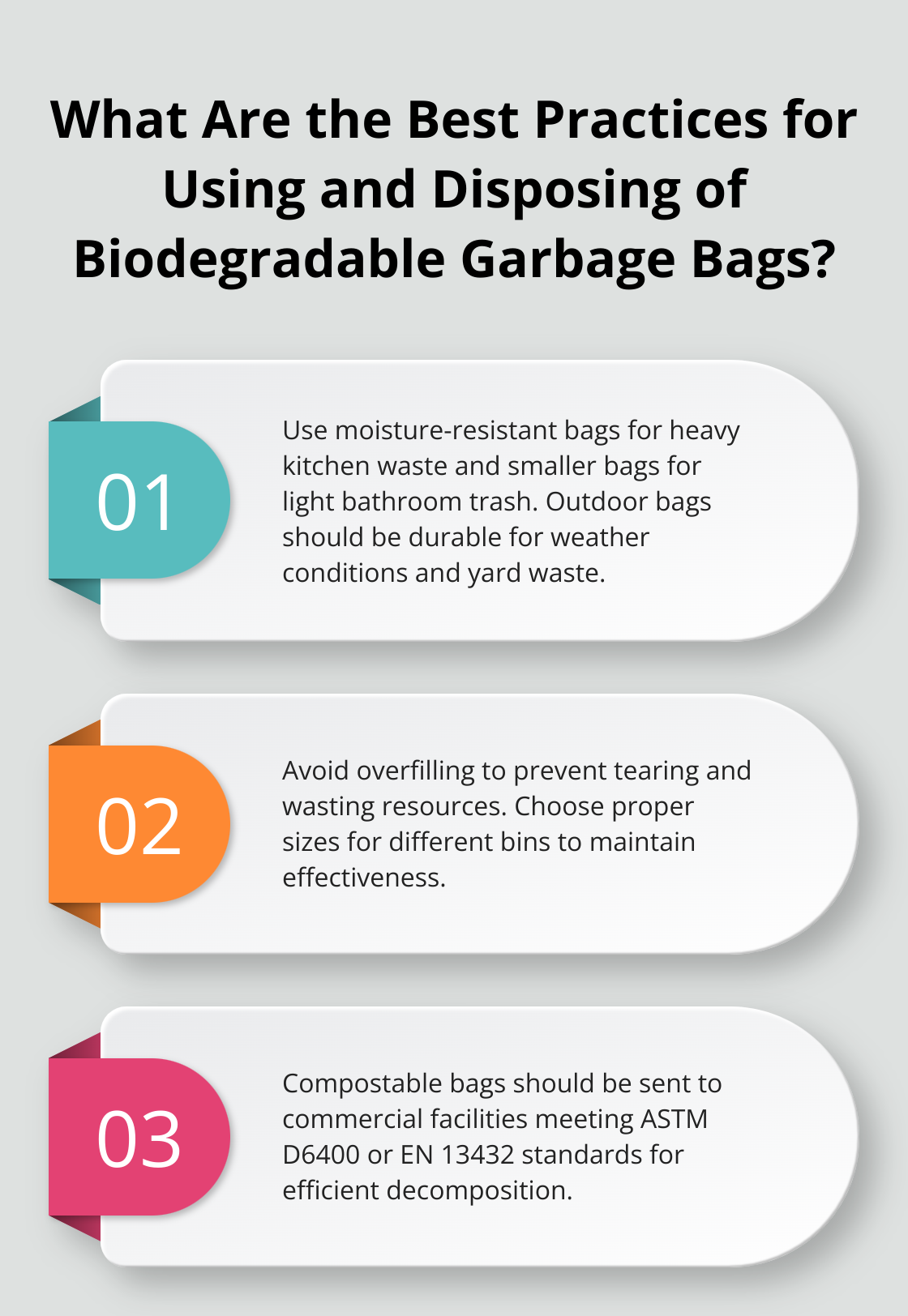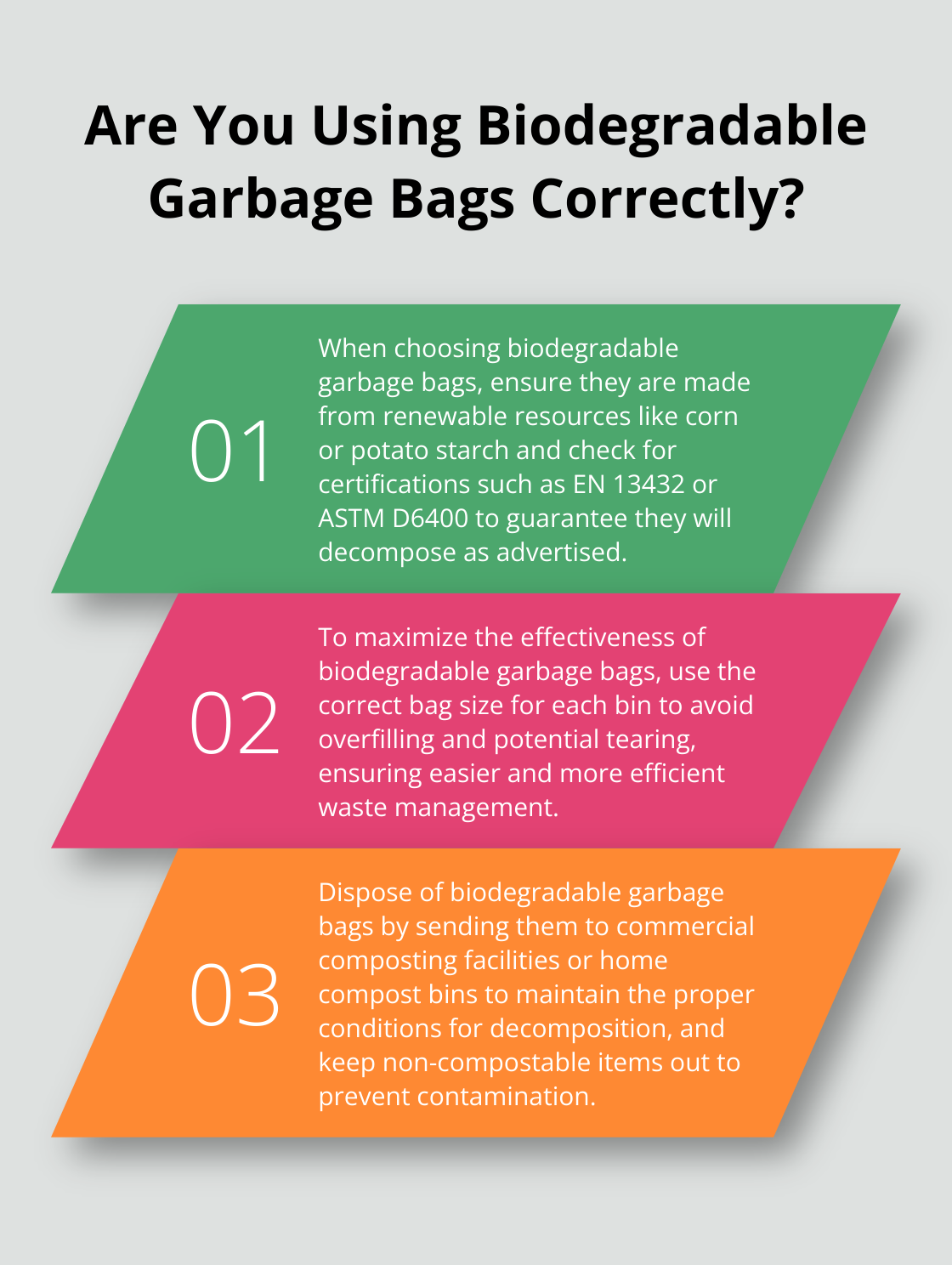Switching to biodegradable garbage bags can make a big difference in reducing waste and protecting the environment. These bags break down more quickly than traditional plastic, leaving a smaller footprint.
At The A Team Cleaning Services, we believe in promoting sustainable practices.
Here’s a comprehensive guide to help you understand, choose, and properly use biodegradable garbage bags.
What Are Biodegradable Garbage Bags?
Understanding biodegradable garbage bags is essential to make informed, eco-friendly choices. These bags are designed to break down faster than traditional plastic bags, reducing their impact on the environment.
Key Characteristics of Biodegradable Garbage Bags
Biodegradable garbage bags are crafted from renewable resources such as corn starch, potato starch, or other plant-based materials. This composition allows them to decompose more quickly under natural conditions. On average, biodegradable bags can break down within 3 to 6 months when exposed to the right conditions, unlike conventional plastic bags that can linger for hundreds of years.

The breakdown process involves microorganisms that consume and break down the organic material into water, carbon dioxide, and biomass. However, it’s critical to note that these bags often require appropriate conditions, such as a high temperature and humidity, to decompose efficiently.
Differences Between Biodegradable and Traditional Plastic Bags
Traditional plastic bags are made from polyethylene, a material derived from fossil fuels. These bags are resistant to natural degradation, leading to significant environmental pollution. Unlike biodegradable bags, they do not decompose under natural conditions. Instead, they break down into microplastics which can persist in the environment indefinitely.
Biodegradable garbage bags, on the other hand, aim to mitigate these issues with their ability to biodegrade. The key difference lies in their chemical structure and source materials. Biodegradable bags contain polymers that microorganisms can digest, facilitating a quicker and more complete breakdown.
Environmental Impact and Benefits
Switching to biodegradable garbage bags offers tangible environmental benefits. According to a study published by the European Bioplastics organization, using biodegradable bags can reduce carbon emissions by up to 60 percent compared to conventional plastic bags. This significant reduction is due to the renewable materials used in their production and the decreased reliance on fossil fuels.
Furthermore, biodegradable bags help minimize waste in landfills. When composted properly, they convert into valuable compost, enriching the soil and promoting healthy plant growth. This practice can also reduce methane emissions from landfills, as organic waste in landfills decomposes anaerobically, producing methane—a potent greenhouse gas.
For practical tips on integrating biodegradable products into your cleaning routine, you can refer to our guide on biodegradable cleaning products.
By understanding these facets of biodegradable garbage bags, it becomes clear why they represent a crucial step toward sustainable waste management. Reducing plastic waste through such choices is a concrete action towards a cleaner and healthier planet.
How to Choose Biodegradable Garbage Bags
Material Composition and Certifications
When selecting biodegradable garbage bags, the material composition is critical. Bags made from renewable resources like corn or potato starch are preferable because they decompose under natural conditions. Always look for certifications such as EN 13432 or ASTM D6400, which assure that the bags meet compostability standards. Without these certifications, there’s no guarantee that the bags will break down as advertised.
Durability and Load Capacity
Durability and load capacity are non-negotiable when it comes to garbage bags. Biodegradable doesn’t mean flimsy. Make sure the bags you choose can handle your typical waste load without tearing. Many consumers opt for brands that specifically advertise their strength and durability to avoid frustrating breaks and spills. It’s essential to read customer reviews and, if possible, test a small quantity before committing to a larger purchase.
Cost and Availability
Cost and availability can vary widely. While biodegradable bags are often more expensive than traditional plastic bags, their environmental benefits justify the cost. A study by BioCycle magazine found that using compostable bags in municipal compost programs can significantly reduce waste management costs in the long run. For availability, most major retailers carry a variety of biodegradable options, and they are also readily available online. Choosing brands that balance cost and eco-friendliness, like BioBag or GreenBag, can provide both economic and environmental value.
For more tips on integrating eco-friendly materials in household practices, check out our sustainable laundry solutions.

How to Use and Dispose of Biodegradable Garbage Bags
Effective Use in Various Settings
Using biodegradable garbage bags properly ensures that they perform as intended. For kitchen waste, choose bags that are moisture-resistant and strong enough to handle heavy food scraps. In the bathroom, smaller biodegradable bags are ideal for light trash like tissues and cotton swabs. Outdoor use requires durable biodegradable bags that can withstand weather conditions and heavy yard waste.

To get the best results, avoid overfilling the bags. Overfilled bags can tear, leading to spills and wasted resources. Opt for the correct sizes for different bins to prevent stretching and ensure easier handling. Maintaining a consistent waste-to-volume ratio enhances the bag’s effectiveness, reducing the likelihood of material breakdown issues.
Correct Disposal Methods to Maximize Decomposition
Proper disposal is vital for the decomposition of biodegradable bags. They require exposure to certain conditions to break down effectively. Compostable bags should be sent to commercial composting facilities that meet ASTM D6400 or EN 13432 standards. These facilities provide the high temperatures and humidity needed for efficient decomposition.
Avoid sending biodegradable bags to landfills, as the anaerobic environment slows down the decomposition process. Instead, use them in home compost bins for organic waste like fruit peels and coffee grounds. Adding moist organic material to the compost helps maintain the necessary environment for breakdown. It’s essential to keep non-compostable items like plastic, glass, and metals out of these bags to prevent contamination.
Common Mistakes to Avoid
Using biodegradable garbage bags effectively means steering clear of common pitfalls. One frequent mistake is using them for non-organic waste like pet waste or diapers. These materials can contaminate compost and hinder the decomposition process. Another mistake is storing bags improperly. Biodegradable bags should be kept in cool, dry places, away from sunlight and heat, to prevent premature degradation.
Additionally, avoid over-relying on biodegradable claims without checking for proper certifications. Without valid certifications, the bags may not decompose as promised, leading to potential environmental harm. Always check for labels indicating adherence to recognized standards.
For more tips on how to integrate these practices efficiently, consider reading about natural drain cleaning methods.
Conclusion
Switching to biodegradable garbage bags represents a significant positive step towards reducing environmental impact. These bags, crafted from renewable resources, decompose much faster than their traditional plastic counterparts, thus reducing waste and carbon emissions. By integrating biodegradable products into your routine, you can contribute to sustainability efforts and promote healthier ecosystems.

The benefits are clear-cut: reduced landfill waste, lower greenhouse gas emissions, and improved soil health through composting. These environmental gains are backed by concrete data, such as the European Bioplastics organization’s finding that using biodegradable bags can cut carbon emissions by up to 60 percent compared to conventional plastics.
At The A Team Cleaning Services, we advocate for eco-friendly choices in all aspects of our work. Incorporating biodegradable garbage bags is a practical yet impactful way to foster a greener lifestyle. Proper selection, usage, and disposal methods are essential to maximize the environmental benefits these bags offer. For further tips on integrating biodegradable products into your routine, our biodegradable cleaning products guide is a valuable resource.
By choosing biodegradable options, you not only enhance your waste management practices but also play a role in preserving the planet for future generations. At The A Team Cleaning Services, we are committed to providing services that align with these sustainable values. Learn more about our eco-friendly cleaning solutions and how they can transform your home into a healthier, more inviting space by visiting our website.
Switching to biodegradable garbage bags is more than just an eco-friendly choice—it’s a step towards a cleaner, healthier world.
